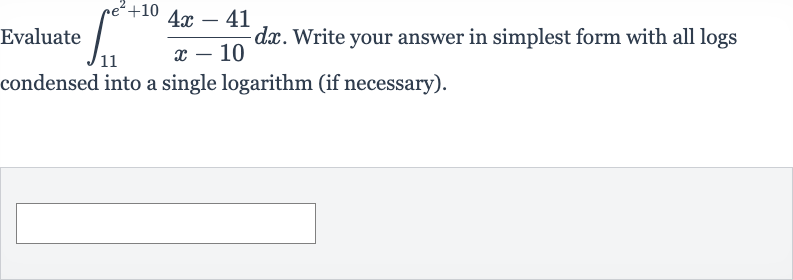Full solution
Q. Evaluate . Write your answer in simplest form with all logs condensed into a single logarithm (if necessary).
- Simplify Integrand: Simplify the integrand if possible.The integrand can be simplified by long division since the degree of the numerator is equal to the degree of the denominator. We divide by to get and multiply by to get . We subtract this from the numerator to get a remainder of . So, the integrand simplifies to .
- Split Integral: Split the integral into two simpler integrals.We can write the integral as the sum of two simpler integrals:.
- Integrate Terms: Integrate each term separately.The integral of with respect to is , and the integral of with respect to is . So we have: and .
- Combine Results: Combine the results and apply the limits of integration.Combining the results from the previous step, we get: from to .Now we need to evaluate this expression from to : evaluated from to = .
- Perform Evaluation: Perform the evaluation at the upper and lower limits.First, we evaluate at the upper limit :.Since is positive, we can remove the absolute value:.Next, we evaluate at the lower limit : (since ).
- Subtract Limits: Subtract the lower limit evaluation from the upper limit evaluation.Now we subtract the lower limit result from the upper limit result:.
- Write Final Answer: Write the final answer.The final answer is the result of the subtraction from the previous step:.

